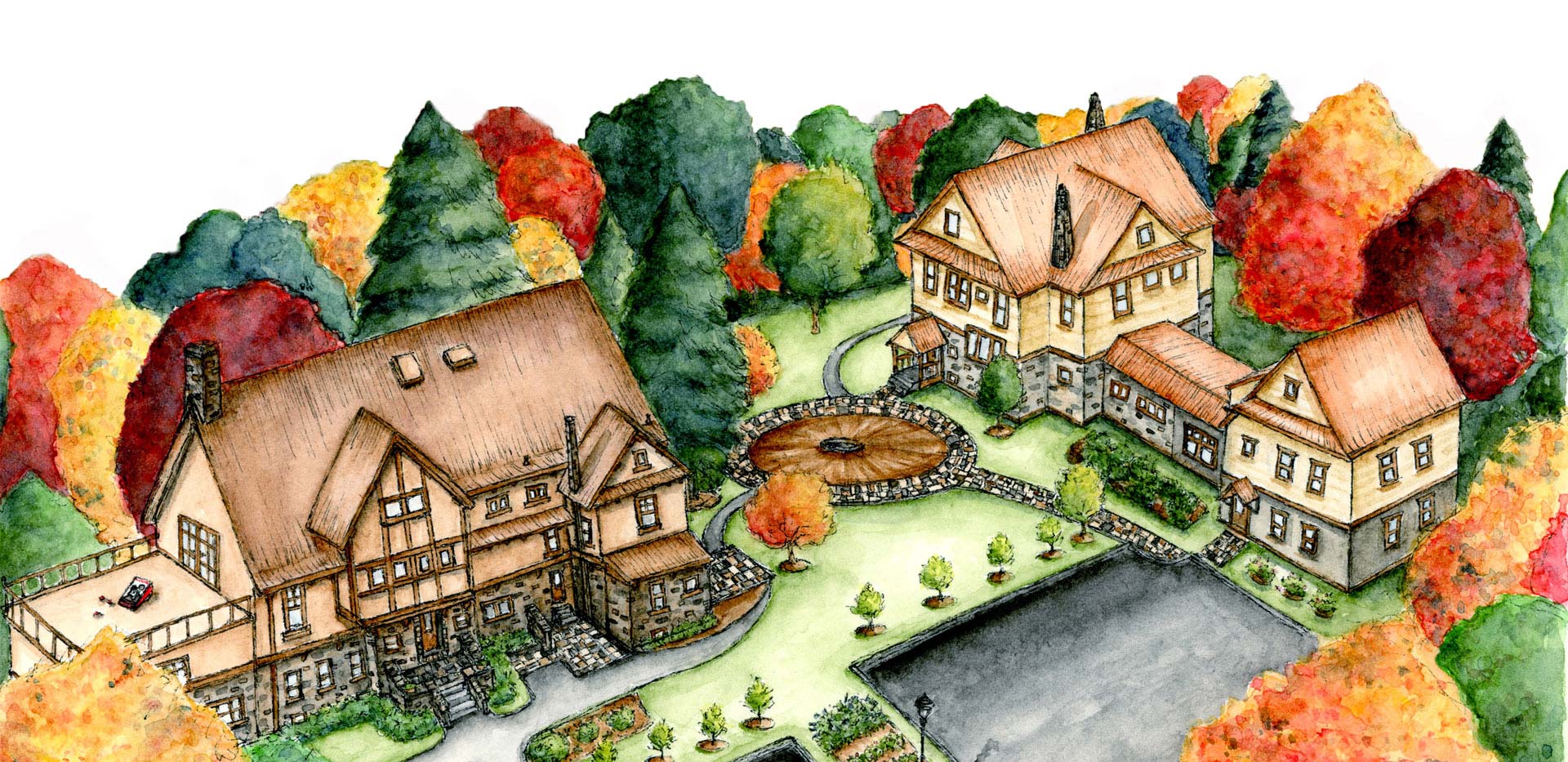
I don’t know what I would have done if I had been an artist living blocks from Ground Zero, but I like to think I might have done what Mako Fujimura has done.
Over the last several years, Fujimura has communicated in images and words that 9/11 was not only an extraordinary event, but also an ordinary event, in this sense: the whole world is a Ground Zero of sorts. The world is broken, full of suffering that ought never be denied. That is not to say Fujimura’s work is cynical. He rather steers a middle course between despair and sentimentality, capturing the complexity of a world that is simultaneously broken and beautiful. Not only that, but he also suggests hope for re-creating the world as it ought to be. Such nuance is a mark of good art–and of good religion.
Last month, Chesterton House provided scholarships to Cornell students attending “Redemptive Culture: Creating the World that Ought to Be,”the 2007 International Arts Movement (IAM) conference in New York City. The conference was outstanding. Speakers included IAM founder Fujimura, Les Miserables producer Karen Goodwin, Ground Zero master plan architect Daniel Libeskind, and two theologian-musicologists–Dr. Jeremy Begbie and Dr. William Edgar.
Begbie’s keynote addresses also dealt with the theme of re-humanizing a broken world. The tension is that while we long for something radically new, we are bound to time and space. The “relentless cult of novelty” (Solzhenitsyn) among the avant-garde is a longing to be re-born, and yet we cannot escape tradition. Every effort to transcend tradition fails, and results in a new tradition. The concept of artists creating ex nihilo is thus mistaken. What creative artists really do is re-create; they add something new to something old and thereby re-make or re-envision it. Indeed, in art, music, literature, and film, there is always the presence of antecedent texts, styles, and methods.
Speaking from the book of Isaiah, Begbie asked whether God himself might renew this world by a similar pattern–by introducing “a newness from beyond” that arrives in the world in recognizable form. “Quite so,” he concluded his first lecture.
There is nothing so new, Begbie continued the next evening, as the new heavens and the new earth promised in Scripture. And yet even the new heavens and the new earth are not radically new, but a renewal of what already is. What does that mean for us? It means that we are “agents of the new world” who still live in the old world. Playing bi-tonal chords from various pieces of music, Begbie illustrated his point that we live in the overlap–“between the times.” The new world has invaded the old.
Good art thus not only weaves joy together with woe, but hints at hope for the transformation of mourning into dancing (Ps. 31). In his keynote address entitled “Being a Child of the Creative Age,” Fujimura encouraged members of the audience to think of themselves as wedding planners. “We need to begin to live like a bride expecting a great, cosmic wedding.” Our work is to be anticipatory, even preparatory, of the new heavens and new earth.
Edgar, also a presenter at the IAM conference, speaks and writes on this theme of beauty amidst brokenness with respect to African-American music–spirituals, ragtime, blues, and jazz. The blues, he writes, echoing Fujimura, are funerary but not hopeless. In fact, they are preparatory. “The realism of the blues does not stand opposed to hopefulness, but to sentimentality. So often the music of white people responds to troubled times with escapism. The blues is stark and realistic, but not hopeless. The blues tells us how to live on earth in order to prepare for heaven. Living down here makes no sense unless there is a heaven to give it meaning.”
For those who love the arts, for those drawn and intrigued by this theme of finding grace amidst the ground zeroes of our lives, and for those who are sorry to have missed this wonderful conference, we have some very good news. For those in Ithaca, Chesterton House will be hosting Fujimura next semester. For those in the Metro New York area, we will be hosting a very special evening of jazz music and history with Edgar in May.
On May 5th, at the Ethical Culture Society in midtown Manhattan, Dr. William Edgar will provide his highly regarded routine entitled“Heaven in a Nightclub”–a narrative of misery and hope in the history of African-American music. We are also pleased to announce that Dr. Edgar will be joined by a stellar cast of guests, including recording artist Ruth Naomi Floyd on vocals, Ithaca area virtuoso Joe Salzano on saxophone, and Grammy Award winning composer and musician John Patitucci on bass. Master of Ceremonies for the evening will be Christianity Today columnist and Christian Vision Project Director Andy Crouch.
The event is a benefit concert, and all proceeds will go to support the operations of the Chesterton House ministry. More information can be found atTicketWeb.
One last thing . . . A favor to ask . . . Would you help us spread the word?? Do you know somebody in or near New York City who might be interested in this event? Somebody who knows somebody in or near New York City? Please take a moment and call their attention to this event. Mention it on your blog. Put it in your church bulletin. The theatre seats 800, and our goal is to fill it without spending, well, without spending money that we don’t have on advertising. This is a very simple way you can help the Chesterton House ministry. Thank you!

